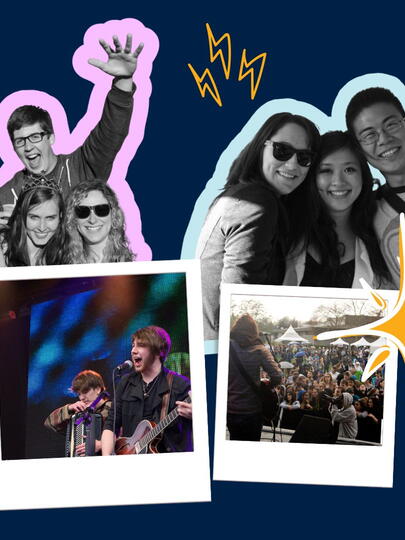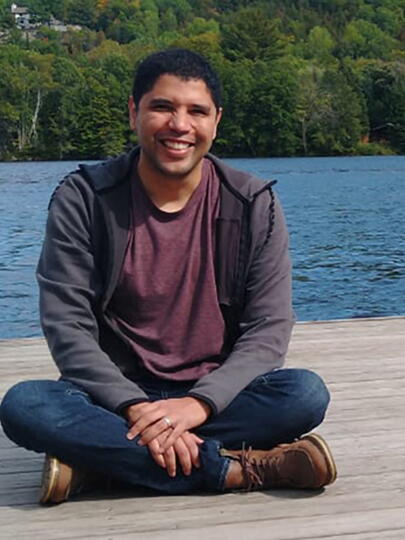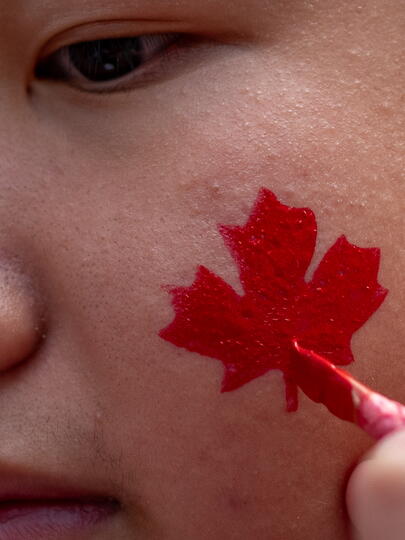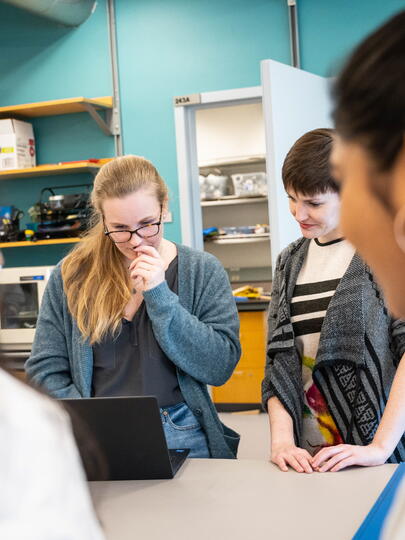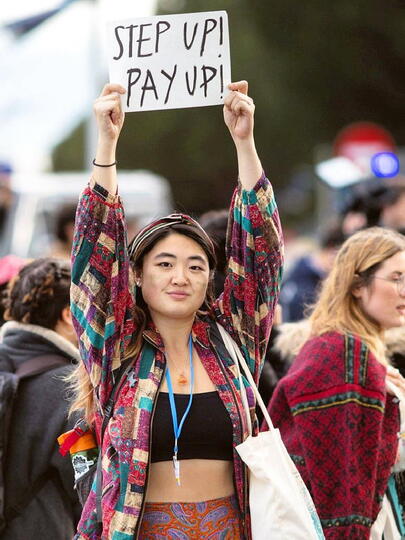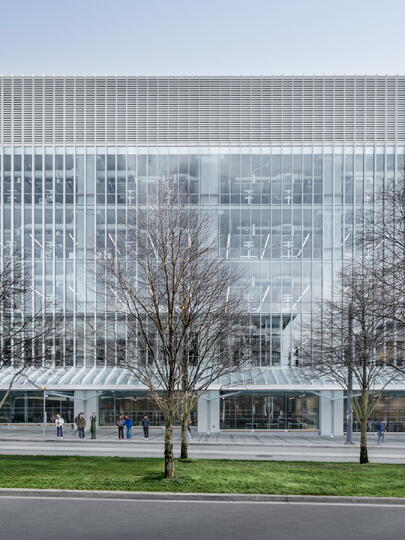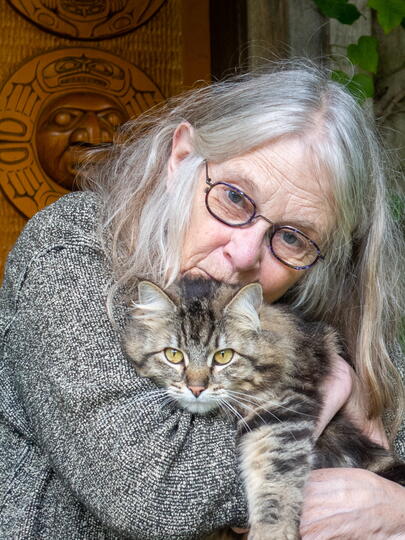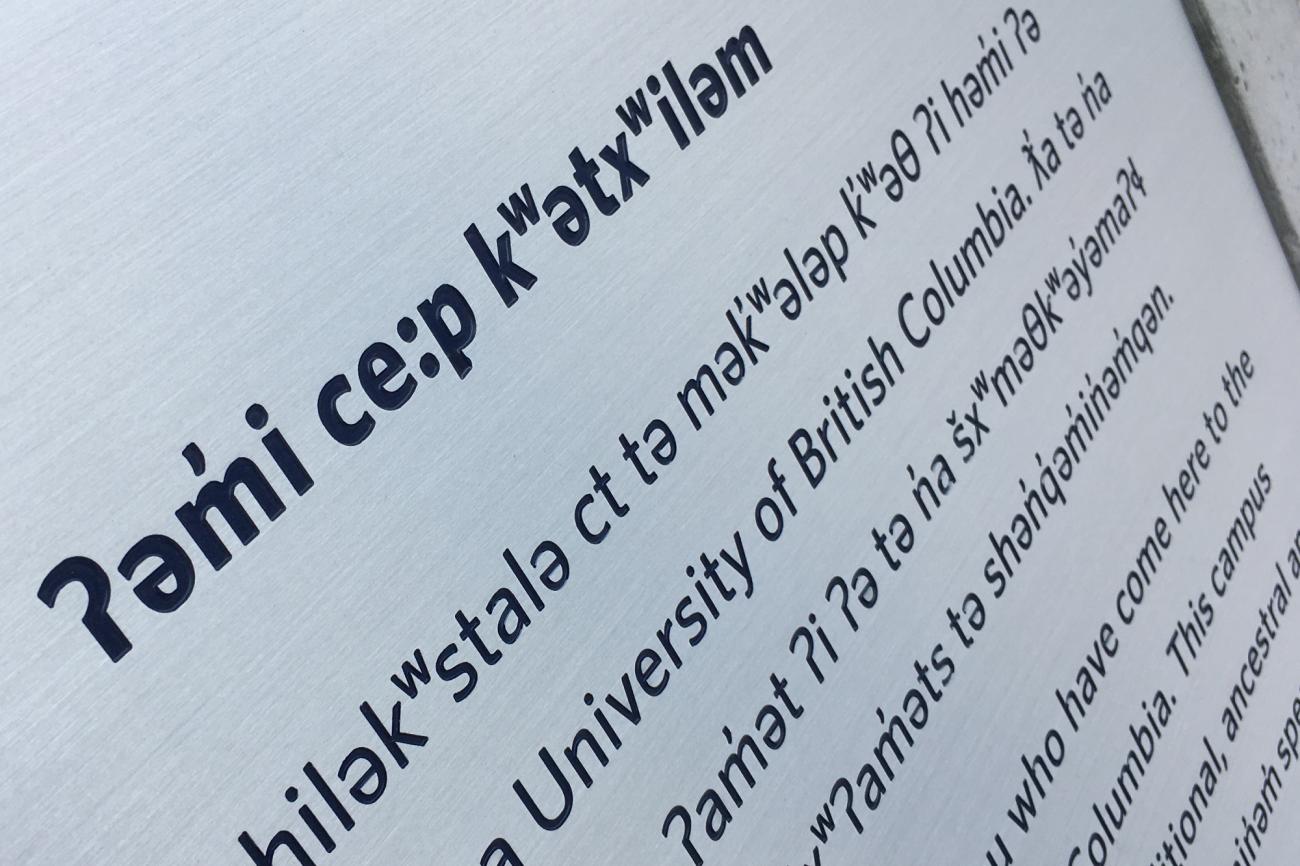Reconciliation, one keystroke at a time
A new font to typeset Salish languages is the result of a unique collaboration between UBC, Musqueam, and Syilx.
What does reconciliation actually look like in practice? It’s often seen through policies, ceremonies, or strategic plans. But in practice, it’s a process that unfolds slowly, through a whole lot of emails, phone calls, knowledge sharing, and taking the time to get the small things right.
In this case, it was a years-long process to create something that many people don’t think much about: the design of letters, called a typeface.
It started with the need for UBC to respectfully express hən̓q̓əmin̓əm̓, the traditional language of the Musqueam peoples, in a written form. The UBC Vancouver campus is situated within the ancestral, unceded territory of Musqueam. Expressing the hən̓q̓əmin̓əm̓ language with respect is an important step in UBC and Musqueam’s relationship, and in moving forward a shared goal of increasing awareness about the land that the university is on.
But because hən̓q̓əmin̓əm̓ is traditionally only an oral language, rendering it in writing is challenging — especially in this new digital age.
Respectful written expression
In the 1990s, after systemic oppression of Indigenous languages throughout Canada, there were only a handful of fluent hən̓q̓əmin̓əm̓ speakers. Through consultation with these language speakers and community, Musqueam determined that the North American Phonetic Alphabet (NAPA) was the right alphabet (orthography) to capture the unique sounds of hən̓q̓əmin̓əm̓. NAPA was chosen instead of the Latin-script alphabet used in modern English because the majority of hən̓q̓əmin̓əm̓ sounds are different from those in English, and the letters in the English alphabet do not capture these unique hən̓q̓əmin̓əm̓ sounds accurately.
With the rise of computers and the internet, the English keyboard became the standard, along with typefaces that accommodate the symbols within the English language. Most of these typefaces do not include hən̓q̓əmin̓əm̓ characters, making it difficult to include hən̓q̓əmin̓əm̓ alongside these fonts.
At the time, Times New Roman, a serif typeface, was a standard font for word processing. First Nations Unicode is a similar typeface to Times New Roman that includes hən̓q̓əmin̓əm̓ characters, and for the past 30 years it has been the only widely-accessible typeface that accurately represents hən̓q̓əmin̓əm̓.
As you can imagine, only having one font is extremely limiting. “When people put a hən̓q̓əmin̓əm̓ word in a design with sans-serif fonts, such as Helvetica or Arial, the hən̓q̓əmin̓əm̓ word stands out,” explains Vanessa Campbell, a Musqueam band member and Musqueam Language and Culture Department staff member. “That difference in fonts changes the feeling and perception of a message being conveyed. And it’s difficult and time consuming to develop hən̓q̓əmin̓əm̓ characters from scratch for different projects and different typefaces.”
Patient collaboration
This challenge was frequently happening with UBC’s institutional font, Whitney, as the university set out to increase hən̓q̓əmin̓əm̓ on campus signs and other materials. “We first started creating Whitney-based characters for hən̓q̓əmin̓əm̓ words on an as-needed basis for plaques and other special projects around 2014,” says Matt Warburton, design manager for UBC Brand and Marketing. “It became clear that we needed a sans-serif font — a custom version of Whitney that would let us typeset in the language of the Indigenous partners and hosts of UBC.”
The new fonts also needed to be capable of typesetting nsyilxcən, the language of Syilx Okanagan Nation, since UBC’s Okanagan campus is situated within the ancestral and unceded territory of Syilx Okanagan Nation.
Musqueam Language and Culture Department worked closely with UBC Brand and Marketing to develop a new typeface that integrates with Whitney and renders hən̓q̓əmin̓əm̓ with respect. Dr. Jeannette Armstrong, professor of Indigenous Studies at UBCO, and Dr. Maxine Baptiste, manager of the Nsyilxcen Language Program at the En’owkin Centre, provided additional consultation on the font’s development.
Developing the font was a four-year-long process, involving hours of consultation to finalize the characters and accents design. “Any time a new character was developed, we passed it through the whole language team at Musqueam to get feedback,” explains Campbell.
The characters also needed to have typographic uniformity so that John Hudson and Paul Hanslow at Tiro Typeworks could code the font to be typed on standard keyboards. “For one character, I think there were 20 different versions of the sample that went back and forth between us until we figured out the right one,” says Campbell.
“Vanessa and I had worked closely together previously on another Tiro typeface called Huronia, adjusting character shapes and accent positions,” recalls Warburton. “She was familiar with how detailed we could get with the adjustments required to Whitney, and how much back and forth would be required to satisfy both of us — me from a typographic design perspective, and her from an accuracy and comprehension perspective.”
Revitalizing language
The final font, called Whitney Salishan, is one of many tools that the Musqueam and Syilx peoples will use to revitalize their languages.
The font will help support Syilx language research and education at UBC Okanagan and the new Bachelor of Nsyilxcən Language Fluency Program, says Dr. John Lyon, an assistant professor in the program. “As the new official nsyilxcən font at UBCO, it will be used on signage, buildings, and other official communications, and it expresses in visually pleasing terms the vibrancy and permanence of Syilx language to the general public.”
The font also facilitates expression of other languages within the Salishan language group. “As our fluency program grows to include students from Nɬəʔképmx, Secwépemc, and St’át’imc communities, we anticipate that Whitney Salishan will also grow to accommodate and support these languages,” says Dr. Lyon.
“The process of building this relationship and creating this typeface is an important part of a holistic approach to reconciliation and healing, not just for UBC, but for the entire Musqueam community and beyond,” says Larry Grant, Musqueam member and manager of Musqueam Language and Culture Department. “By recognizing our traditional language, it is validating our self-identity, recognizing our relationship to our land and ancestors, and contributing to community pride for who we are as Musqueam people.”
A limited number of Whitney Salishan font licenses are now available to Musqueam, Syilx, and UBC faculties and units. Requests can be made by UBC faculty and staff who have a UBC email address. The UBC font license does not cover students or external providers at this time. However, UBC is working with Monotype, which hold the copyrights to the Whitney fonts, to make the font available to the general public for purchase.
This article was written in collaboration with Musqueam Administration, including Larry Grant, Vanessa Campbell, and Odette Wilson, with Carolyn Ali from UBC Brand and Marketing.



